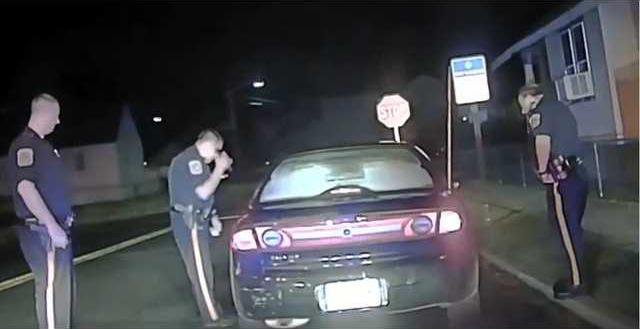Since the 2014 police killing of Michael Brown in Ferguson, Missouri, the public and journalists alike increasingly depend on witness video footage of police brutality.
More recently, viral witness videos have captured the shootings of two black men at the hands of police officers in Minnesota and Louisiana Philando Castile and Alton Sterling, respectively.
"Activists and victims are increasingly relying on eyewitness videos as evidence when alleging police brutality; the videos can be useful for both ensuring accountability and counteracting implicit bias (of police officers)," Vox reported.
Yet as useful as these videos may be as evidence in such cases, watching the videos may have unintended consequences for the viewer.
"By watching and sharing them, are we actually helping to secure racial justice? Or are we just spreading the trauma around?" Vox's Caleb Lewis wrote.
The short answer, Lewis found, is yes trauma and violence can be experienced secondhand via video, sometimes traumatizing viewers who are unprepared for what they're seeing or if they're exposed to such content repeatedly.
Yet it's nearly impossible to escape distressing videos and content today, especially as more people start to get their information online.
As learned in the 2015 live-television shooting of two Virginia journalists and a source, which sparked outrage against video autoplay features, avoiding disturbing videos is more difficult than ever. In addition to stress responses including panic attacks and depression, overexposure to violence via video can lead to people becoming desensitized to the problems or acts such videos hope to address.
There's evidence that even fictionalized Hollywood violence can change how people react to horrors reported in the news. Photos from war, once run in newspapers to spur action, now can get lost in a sea of violent content online, at the movie theater or on TV, eliciting a much more "ho-hum" reaction.
Multiple studies have also shown that pornography can fundamentally change how children and teens think about intimacy and relationships even if they haven't seen pornography themselves.
And, as Lewis reported, it's not necessary to watch videos of violence to try and address the problems they bring to light.
"Real advocacy means working creatively to stem that harm in addition to and sometimes instead of sharing videos on social media," Lewis wrote. "Without doing so, we risk supplanting one form of injury with another."
More recently, viral witness videos have captured the shootings of two black men at the hands of police officers in Minnesota and Louisiana Philando Castile and Alton Sterling, respectively.
"Activists and victims are increasingly relying on eyewitness videos as evidence when alleging police brutality; the videos can be useful for both ensuring accountability and counteracting implicit bias (of police officers)," Vox reported.
Yet as useful as these videos may be as evidence in such cases, watching the videos may have unintended consequences for the viewer.
"By watching and sharing them, are we actually helping to secure racial justice? Or are we just spreading the trauma around?" Vox's Caleb Lewis wrote.
The short answer, Lewis found, is yes trauma and violence can be experienced secondhand via video, sometimes traumatizing viewers who are unprepared for what they're seeing or if they're exposed to such content repeatedly.
Yet it's nearly impossible to escape distressing videos and content today, especially as more people start to get their information online.
As learned in the 2015 live-television shooting of two Virginia journalists and a source, which sparked outrage against video autoplay features, avoiding disturbing videos is more difficult than ever. In addition to stress responses including panic attacks and depression, overexposure to violence via video can lead to people becoming desensitized to the problems or acts such videos hope to address.
There's evidence that even fictionalized Hollywood violence can change how people react to horrors reported in the news. Photos from war, once run in newspapers to spur action, now can get lost in a sea of violent content online, at the movie theater or on TV, eliciting a much more "ho-hum" reaction.
Multiple studies have also shown that pornography can fundamentally change how children and teens think about intimacy and relationships even if they haven't seen pornography themselves.
And, as Lewis reported, it's not necessary to watch videos of violence to try and address the problems they bring to light.
"Real advocacy means working creatively to stem that harm in addition to and sometimes instead of sharing videos on social media," Lewis wrote. "Without doing so, we risk supplanting one form of injury with another."








